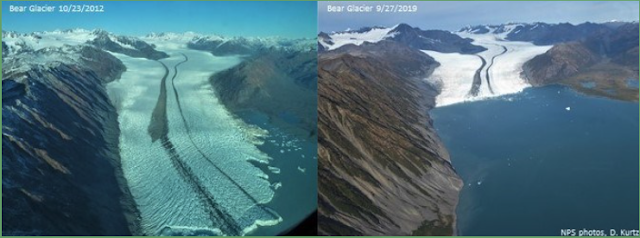Where are we going with this? The information on this page should increase understanding related to this standard: Understand the environment and how each organism fits in and analyze the biogeochemical cycles.
Article includes ideas, images, and content from Troy Smigielski (2022-04)
(Hmm… Not exactly the same word as success is it?)
Ecological succession is a series of predictable events that occur in a community over time.
Primary succession is succession that begins in an area that has no remnants of an older community. In the first image to the right, there was no plant life or soil to begin with.
In primary succession, the first species to colonize the area is called a pioneer species. The pioneer species in primary succession is often a lichen.
- Once the lava stops, it will become a mass of solid rock.
- Lichens become the pioneer species and begin to form soil. This allows small plants to grow.
- As the smaller plants die and decompose, more nutrients are available for larger plants.
- Over time, there is enough soil for bigger plants
Secondary succession is succession that occurs when a disturbance affects an existing community but doesn’t completely destroy it. There was plant life and soil to begin with.
- Fire can help return nutrients to the soil killing larger trees.
- This allows grasses and smaller plants to grow.
- These attract herbivores and their predators to return.
- This can lead to ecological restoration.
Examples…
Number 1: A volcano erupts covering a small pond in lava rock. Eventually, lichens break down the rock into soil.
Number 2: Humans clear land for farming, which allows new plants to grow.
This is secondary succession.
Number 3: Humans clear land for farming, which allows new plants to grow.
This is primary succession.
Number 4: A wildfire in northern California burned down several acres of forest, which left fresh, nutrient-rich soil for a new ecosystem to form.
This is secondary succession.
Succession will eventually reach a stable point where the community is at its peak. This is called a climax community.
In most ecological climax communities, there are a lot of different organisms.
Biodiversity is the variety of life in a particular place. It allows organisms and ecosystems to adapt to environmental change. It also contributes to medicine and agriculture.
It also aids ecological communities in recovery from sudden disruptions. Resilience is the ability of an organism or ecosystem to recover after a disturbance. The more biodiversity an ecosystem has, the more resilient it is likely to be.












No comments:
Post a Comment